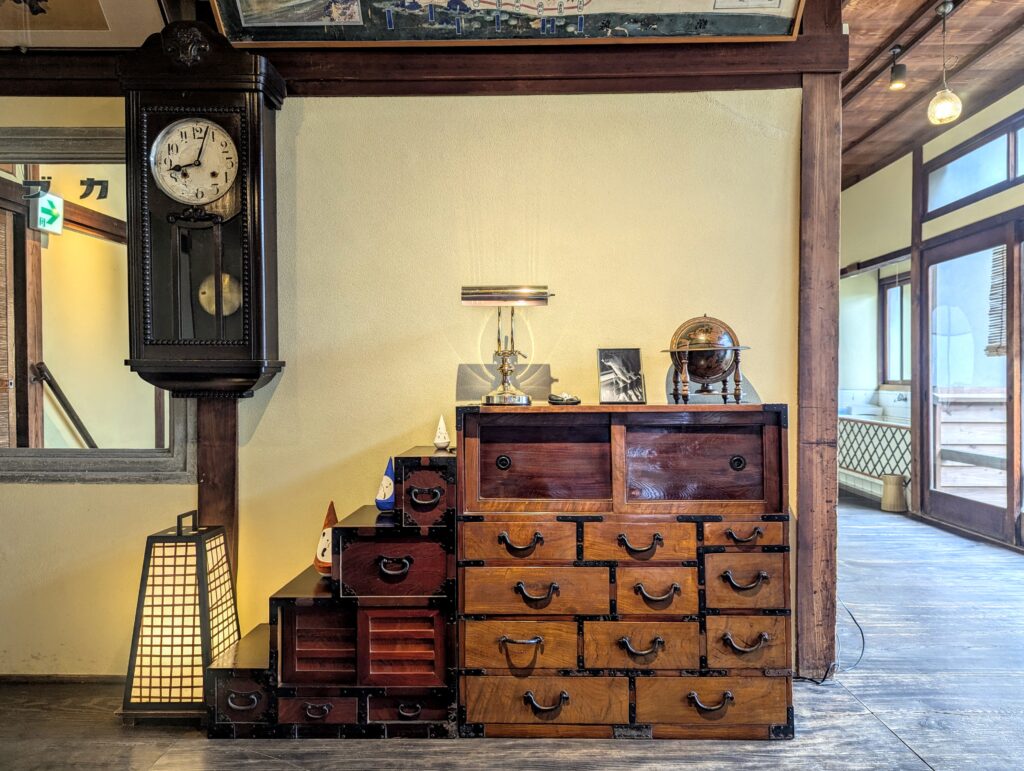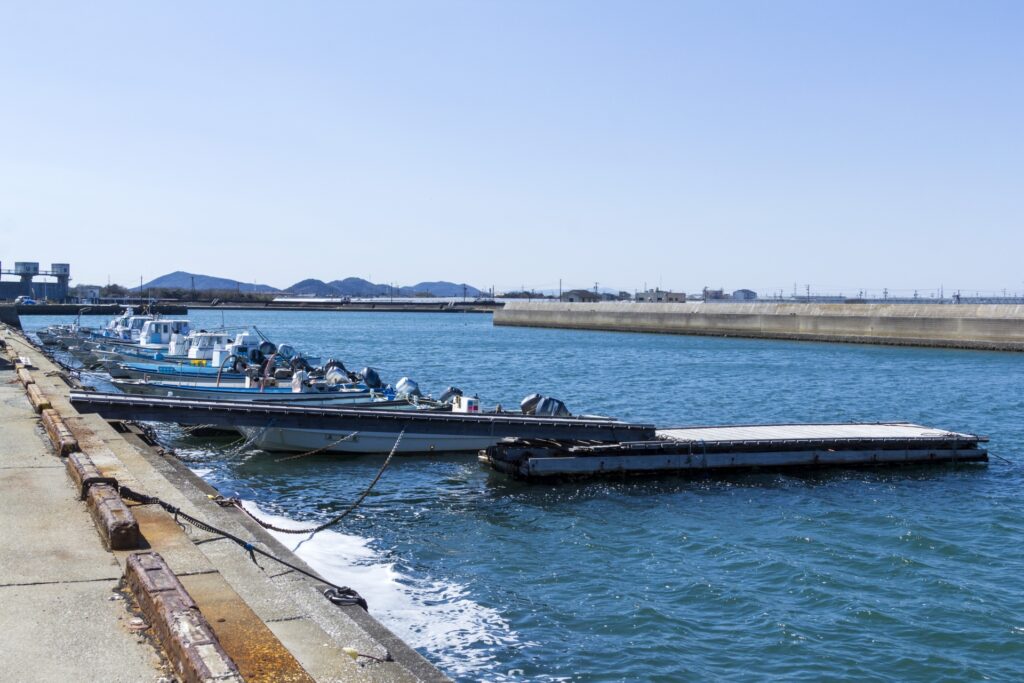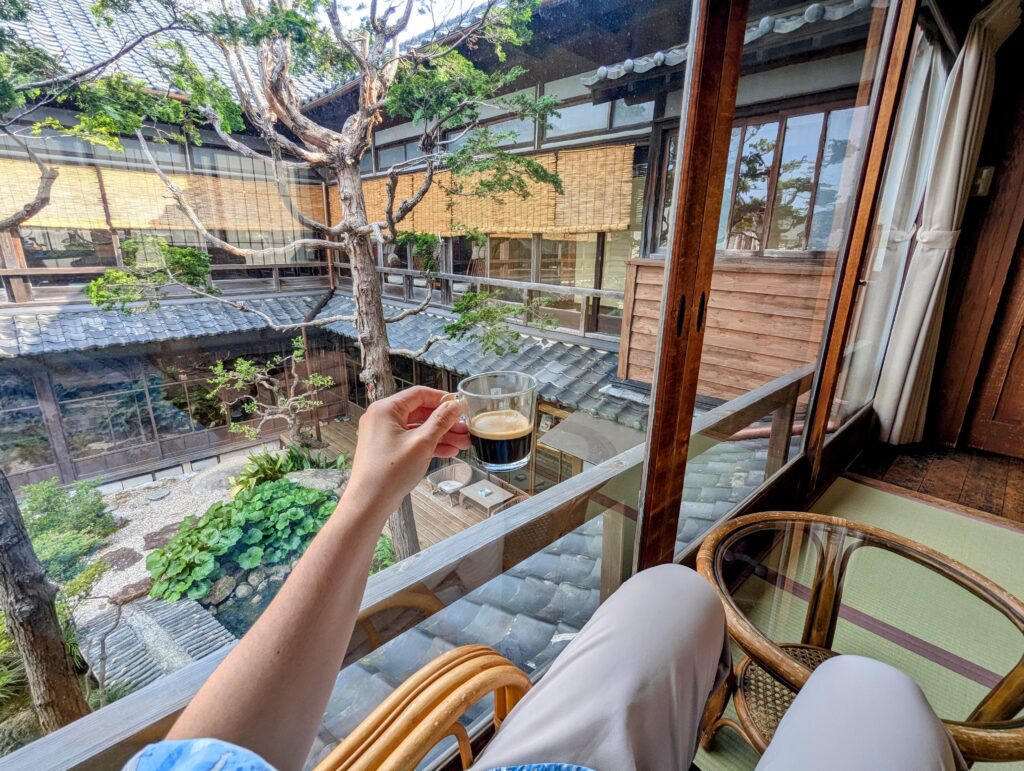Have you ever felt nostalgic for a place you’ve never been? It’s as if your heart remembers something your mind never experienced. I don’t know why it happens, but it’s one of my favorite things—because even in a foreign place, I instantly feel like I belong.
Today, I learned this feeling has a name: anemoia. And it’s exactly what rushed over me the moment I stepped through the fluttering red-and-white checkered noren at the entrance of Kakujoro, marking the transition from 2025 to 1929.

A first visit that felt like a return
Simply calling Kakujoro a “traditional Japanese ryokan” feels inadequate. I believe it is better described as an antique Japanese chest you can step inside.
Immediately embraced by the nutty, patinaed wood of the floors and ceilings, all softly lit by golden-hued lamps, I felt as if wrapped in a freshly laundered blanket, still warm from the sun, on a crisp autumn morning. The earthy aroma of rain-soaked soil drifted through the old-school sliding doors, inviting my gaze to the lovingly maintained traditional Japanese garden just outside the corridor. The low hum of footsteps, from staff and fellow guests, nurtured a comforting sense of togetherness.
As someone who adores anachronistic gems like film cameras, typewriters, and record players, the vintage decor here—like the stained-glass lamps and the grandfather clock with its hefty bronze pendulum—passed my vibe check with flying colors.
In hindsight, it’s clear why this place sparked the feeling of anemoia in me. I felt like a giddy little kid again.


Embers of Fukue’s golden days
At Kakujoro, every corner feels etched with stories from another time—around 100 years’ worth, to be exact.
To understand its full story, we need to travel further back to 1830, when Izutsuro (now Kakujoro’s annex, just a two-minute walk away) was built. Set in the heart of Fukue, an entertainment district at the time, Izutsuro was the only hatago on the Atsumi Peninsula: a traditional inn serving weary travelers during the Edo period (1603 – 1868).
A few decades later, as Fukue transformed into a thriving maritime hub with the development of its port, the grandfather of the current owner built a high-class traditional Japanese restaurant on a spacious nearby plot, and that marked the first chapter of Kakujoro.

Painting scenes from a century past
After hearing this backstory and piecing it together with tidbits I uncovered in my own research, my mind began to wander to the everyday scenes that might have unfolded when Kakujoro first opened its doors in 1929. I am no historian, of course, so please take this not as a “what was,” but as a playful imagining of what could have been.
A group of merchants in crisp kimono, carrying the scent of salt and sea from the nearby port, gather for an evening banquet. Reminiscent of the town’s past as a bustling entertainment district, a geisha lets the wistful, twangy notes of her shamisen (a traditional three-stringed instrument) ripple through the air.
Over sake and a multi-course kaiseki meal, guests trade stories and speculate about Japan’s latest marvel: radio broadcasting. They wonder what it sounds like, and whether it will reach Fukue one day. Nearby sits a likely out-of-town guest: a Japanese gentleman in a dashing Western-style suit, his fedora resting on the low table beside him—an ensemble considered quite fashionable among city dwellers of the time. He jots notes in his travel diary, reflections on the changing face of Japan.
A time capsule, mindful of the modern traveler
Kakujoro feels like slipping through a crack in time, but that doesn’t mean the clock has stopped ticking. The ryokan masterfully weaves modern comforts into the Showa-era setting without ever feeling out of place.
Whether it was the automatic sliding doors at the entrance, the speedy Wi-Fi (essential for sneaking in a few work emails, as I did), the coffee machine that delivered my morning boost in seconds, or the Western-style bed in place of the traditional futon that can sometimes be a bit too firm, none of it broke the old-world spell. If anything, the contrast made me appreciate the rarity of the beautifully preserved setting even more.

A little far, a lot worth it
Before I share how to get to Kakujoro, I want to remind you of an important saying: “Good things take time.” Fabulous! Now that we have an open frame of mind, Kakujoro is about 2 hours from Nagoya Station in Aichi Prefecture by train or car, and approximately 4.5 hours by train or 3.5 hours by car from Tokyo. Pretty reasonable, right?
If you’re taking the train, the nearest station to the ryokan is Mikawa-Tahara. And by “nearest,” we’re using the charming standards of the Japanese countryside, meaning it’s a 30-minute drive away. You could say Kakujoro is located out in the boondocks, but again, good things take time.
If you’re not driving, you can hop in a taxi or use the ryokan’s shuttle service (reservations required at least 3 days before check-in).
